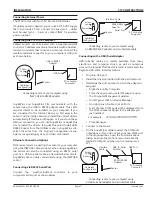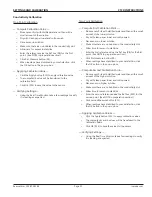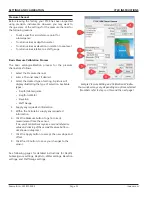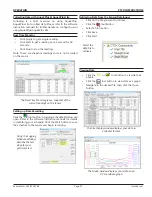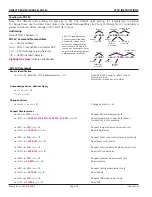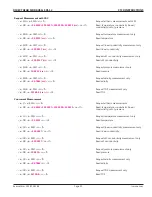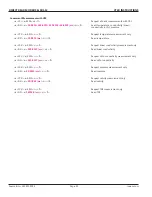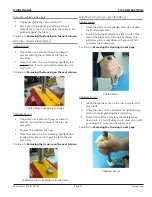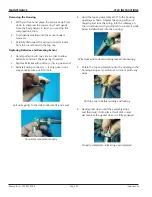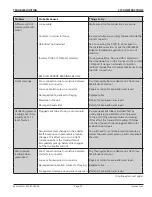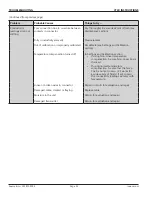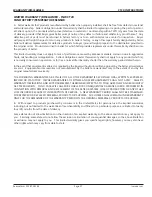
CT2X INSTRUCTIONS
Seametrics • 253.872.0284
Page 21 inwusa.com
MAINTENANCE
Removing Debris from End Cone
At times mud, silt, or other debris may foul the water inlets
to the pressure element. The end cone can be removed to
clean out the debris.
1. Gently twist off end cone portion only - do not twist
off pressure element!
2. Remove debris.
Do not poke anything into the
sensor
. This can damage the sensor element and
void the warranty.
3. Replace and retighten the end cone.
Gently twist off the end cone and carefully remove debris
Sensor
There are no user-serviceable parts, other than the
batteries. If problems develop with sensor stability or
accuracy, contact INW. If the transducers have been
exposed to hazardous materials, do not return them
without notification and authorization.
Cable
Cable can be damaged by abrasion, sharp objects, twisting,
crimping, crushing, or pulling. Take care during installation
and use to avoid cable damage. If a section of cable is
damaged, it is recommended that you send your sensor
back to replace the cable harness assembly.
End Connections
The contact areas (pins & sockets) of the connectors will
wear out with extensive use. If your application requires
repeated connections other types of connectors can be
provided. The connectors used by INW are not submersible,
but are designed to be splash-resistant.
Pressure element
Water inlet
End cone
Desiccant Tubes on Vented Units
On vented sensors, inspect the desiccant tube at least once
every two months. The desiccant tube prevents moisture
in the air from being sucked into the vent tube, which can
cause erratic readings and sensor damage.
The desiccant tube is filled with blue silica gel beads. A
locking barb and a hydrophobic water filter are attached to
the end of the desiccant tube. This filter prolongs the life of
the desiccant as much as three times over a desiccant tube
without the filter.
Install the sensor so that the desiccant tube and cable
connector will not flood or lie in water.
The desiccant is a bright blue color when active and dry.
As moisture is absorbed the color will begin to fade,
becoming a light pink, which indicates full saturation and
time to replace. Replacement desiccant and hydrophobic
filters can be purchased from Seametrics.
To Change the Desiccant:
•
Pulling gently remove the black tube fitting from
the clear desiccant tube.
• Using needle-nose pliers, remove the dark gray
foam plug. Do not discard the plug.
•
Dump out the old desiccant beads and refill with
new desiccant beads – tapping desiccant tube
frequently during refilling to ensure that the beads
are fully seated in tube.
• Push the foam plug back into the tube.
•
Reinsert the black fitting.

